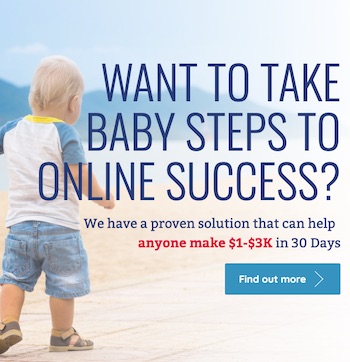“We don’t buy and sell stocks based upon what other people think the stock market is going to do
(I never have an opinion) but rather upon what we think the company is going to do.”
– Warren Buffett
I’m in awe of what Warren Buffett has accomplished. He continues to write, rewrite and break the rules of investing, business, and entrepreneurship. There’s an endless amount that can be learnt from Buffett’s decades in business.
One of the things that impresses me most, though, is that this is all Warren everything he’s accomplished has been on his terms. No one handed him the proverbial silver spoon.
He worked hard, thought outside the box and continued to innovate, elevate and accelerate. And it paid off big time.
That said, it didn’t happen overnight.
Warren has been building his fortune for more than 60 years. As chairman and the single largest shareholder of Berkshire Hathaway for nearly 50 years, Warren’s investment decisions have been carefully watched and highly scrutinized. They’ve also, though, been so on-point it seems almost unfair—like he has a crystal ball hidden away somewhere.
In my quest to understand Warren’s methods and processes, I stumbled on Jeremy Miller’s book, Warren Buffett’s Ground Rules. The author Jeremy C. Miller is an investment analyst for a mutual fund company and a 15-year veteran of the financial industry.

Miller’s book is a must-read whether you’re a huge Warren Buffett fan or simply want to gain that critical edge in business and in life.
Ground Rules covers Warren’s first 14 years as a true business mogul, including his tenure at the helm of Buffett Partnership Limited.
While there’s lots to dive into in Ground Rules, what I find most fascinating is the fact that the book itself is based on 33 letters Warren wrote to his partners from 1956 to 1970, outlining his business strategies and philosophy.
Miller puts it all into his book with a powerful context and strong narrative that weaves every piece together and creates a solid work any entrepreneur, business leader or investor can learn from. You’ll find lots of important tidbits here, many of which can be directly applied to your business—even if you haven’t reached Warren Buffett status just yet.
Overall, the content in Ground Rules is perfect for the business leader or long-term investor who wants to protect their assets and grow their success. In fact, Warren himself endorsed this book and gave the author express permission to work with his letters. If that doesn’t speak to the quality of Ground Rules, I don’t know what does.
 Warren Buffett’s Ground Rules Book Layout:
Warren Buffett’s Ground Rules Book Layout:
- Part I lays out the investment principles and ground rules employed by Warren between 1956-1970. It also describes the Partnership structure and the fees that all partners paid to Warren based on the investment returns realized each year.
- Part II explains the different investment categories. In the beginning there were three; Generals-Private Owner, Workouts, and Controls. A fourth category was added later on: Generals-Relatively Undervalued.
- Part III contains a few different topics, all related to investing; “Conservative Versus Conventional,” “Taxes,” “Size Versus Performance,” “Go-Go or No-Go,” “Parting Wisdom,” and “Toward a Higher Form.” Each one of the chapters touch upon important questions to consider for an investor, and at the same time shows what Warren’s thoughts looked like in these areas.
This book is much more than a compilation of excerpts from Buffett’s letters, smartly organized by investment theme. Miller begins every chapter with an articulate and insightful synthesis, which helps the reader understand Buffett’s key ground rules on each theme.
My Take Aways…
“Timeless Guidance”
Buffett’s correspondence with his early partners was folksy and insightful. Buffett never wrote an investment guide. These letters make up the closest thing investors will ever have to a Buffett textbook on investing.
Among Buffett’s early beliefs are:
- Performance is Relative – Buffett aimed to beat the Dow, which he referred to as his “yardstick.” If the Dow fell 10% in a given year and Buffett’s investments were off only 5%, he considered his performance a victory. He promised not to celebrate a 20% gain if the Dow posted 25% for the year. He told his partners he welcomed criticism for the “right reason” – underperforming the Dow.
- Look at the Long-Term – Buffett didn’t care about short-term results. He considered three years “an absolute minimum” for benchmarking. In frothy markets characterized by rampant speculation, Buffett asked his investors to judge his performance over five years.
- Pick Companies, Not Markets – Trying to predict the direction of the market or the economy is a fool’s errand. Buffett focused on finding undervalued companies with solid products and savvy managers. A bull market lifts all stocks. But Buffett argued his most important gift was not his ability to divine moves in the broad market; his underlying analysis of a specific company was the crucial factor in any investment decision. He relied on a fundamental analysis: were a firm’s assets worth more than its market value?
I Personally found Ground Rules to be a powerful tour through the mind of a man who has consistently astonished the modern investment world. In this book, we get a better understanding of his unorthodox philosophy of diversification, which reversed what was then considered common knowledge when published.
We also get a unique opportunity to follow the development and reasoning behind Warren’s conservative long-term strategies, which have proven effective for decades despite endless movement in the marketplace.
This book is well worth reading and will make you rethink your financial, business and investing views…at least a little.
Talk Soon,
Nicky
P.S. We Can Show You How to Make More Money Online Easily and
Effectively with Proven Systems and Strategies.
Just Apply for an Online Business Strategy Session Today!
Where we will first we identify your skill level, your wants and desires, by reviewing your Application.
There is No Charge to Submit an Application

We are here to help. If you want any help, just Messenger us (Private Message Us)
at our Facebook Messenger link – http://m.me/EasyOnlineBizSolutions

 Everything comes down to priorities, and what you would like to accomplish in every aspect in your life. Whether you make a conscious choice or go with subconscious preferences.
Everything comes down to priorities, and what you would like to accomplish in every aspect in your life. Whether you make a conscious choice or go with subconscious preferences.


 Time is money!
Time is money!




 I’ve said over and over that if you live your passion and work the social networking tools to the max, opportunities to monetize will present themselves.
I’ve said over and over that if you live your passion and work the social networking tools to the max, opportunities to monetize will present themselves.









 Anyway, today I want to talk to you about what you’re doing to feed your mind with the right information to maximise your chances of success in business.
Anyway, today I want to talk to you about what you’re doing to feed your mind with the right information to maximise your chances of success in business.







 We are focused on the outcome that is better described as opening new business relationships to identify potential new business opportunities. There are many ways to do this, and all of them are effective sometimes.
We are focused on the outcome that is better described as opening new business relationships to identify potential new business opportunities. There are many ways to do this, and all of them are effective sometimes.






 A business owner is not just an entrepreneur, a manager or a technician. He is all 3 personalities rolled into one at the same time. Hence, he has to deal with their differing tendencies, needs and wants.
A business owner is not just an entrepreneur, a manager or a technician. He is all 3 personalities rolled into one at the same time. Hence, he has to deal with their differing tendencies, needs and wants. 1. Provide consistent value to your stakeholders, beyond expectations.
1. Provide consistent value to your stakeholders, beyond expectations.




 The words you use when you communicate with others reflects your thoughts on the inside.
The words you use when you communicate with others reflects your thoughts on the inside.







